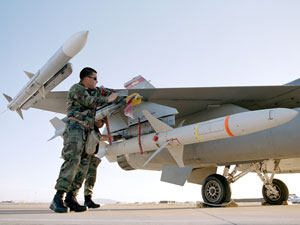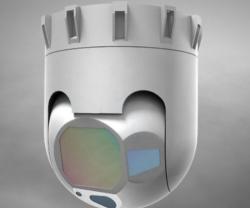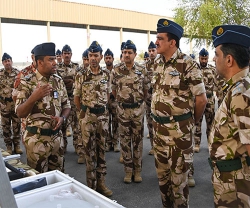Raytheon Tests HARM Upgrades
06.09.2012 North America
Raytheon completed testing of High-Speed Anti-Radiation Missile (HARM) upgrades, which make the combat-proven missile more precise and accurate, while reducing collateral damage.
HARM suppresses or destroys surface-to-air missile radars, early warning radars and radar-directed air defense artillery systems. The upgrade, called the HARM Control Section Modification (HCSM), adds a GPS receiver and an improved inertial measurement unit (IMU) for precision navigation.
HCSM also features a digital flight computer that merges targeting solutions from navigation and seeker systems. The enhancements improve the probability of hit, while controlling where the missile can and cannot fly.
The HCSM effort is an ongoing U.S. Air Force-led competition between two contractors, with a down-select scheduled in 2012 for full rate production.
“HCSM improves HARM's anti-radar capability to defeat counter-HARM tactics, while reducing the risk of fratricide and collateral damage. HCSM also enables warfighters to leverage HARM's supersonic speed and standoff capability to rapidly and accurately engage time-critical targets”, said Harry Schulte, Vice President of Air Warfare Systems for Raytheon Missile Systems.
As part of the Air Force competition, Raytheon completed 2 flight tests of HCSM-modified HARMs. During an April 12, 2012, test, an F-16 aircraft fired an HCSM variant against an emitter that shut down, while a similar threat outside the designated missile impact zone threatened to lure the missile off target. The missile rejected this lure and successfully guided to its primary target. During a May 3 test, an HCSM-enhanced HARM that was fired from an F-16 used GPS coordinates to engage with high accuracy a simulated time-critical target.
“Raytheon's HCSM offers the warfighter enhanced capability, and we believe it will provide the taxpayer the best value. Instead of buying similar systems that cost more, or spending billions of dollars to develop an entirely new system, Raytheon's HCSM will give HARM new capability at an affordable price,” said Chuck Pinney, Raytheon Missile Systems' HARM Program Director.
HARM suppresses or destroys surface-to-air missile radars, early warning radars and radar-directed air defense artillery systems. The upgrade, called the HARM Control Section Modification (HCSM), adds a GPS receiver and an improved inertial measurement unit (IMU) for precision navigation.
HCSM also features a digital flight computer that merges targeting solutions from navigation and seeker systems. The enhancements improve the probability of hit, while controlling where the missile can and cannot fly.
The HCSM effort is an ongoing U.S. Air Force-led competition between two contractors, with a down-select scheduled in 2012 for full rate production.
“HCSM improves HARM's anti-radar capability to defeat counter-HARM tactics, while reducing the risk of fratricide and collateral damage. HCSM also enables warfighters to leverage HARM's supersonic speed and standoff capability to rapidly and accurately engage time-critical targets”, said Harry Schulte, Vice President of Air Warfare Systems for Raytheon Missile Systems.
As part of the Air Force competition, Raytheon completed 2 flight tests of HCSM-modified HARMs. During an April 12, 2012, test, an F-16 aircraft fired an HCSM variant against an emitter that shut down, while a similar threat outside the designated missile impact zone threatened to lure the missile off target. The missile rejected this lure and successfully guided to its primary target. During a May 3 test, an HCSM-enhanced HARM that was fired from an F-16 used GPS coordinates to engage with high accuracy a simulated time-critical target.
“Raytheon's HCSM offers the warfighter enhanced capability, and we believe it will provide the taxpayer the best value. Instead of buying similar systems that cost more, or spending billions of dollars to develop an entirely new system, Raytheon's HCSM will give HARM new capability at an affordable price,” said Chuck Pinney, Raytheon Missile Systems' HARM Program Director.
Previous PostMBDA’s Viper Strike Scores Direct Hits
Latest news
Latest events
Doha International Maritime Defence Exhibition & Conference (DIMDEX 2026)
19 - 22 Jan 2026Doha - QatarUMEX – SimTEX
20 - 22 Jan 2026ADNEC Centre Abu Dhabi, - United Arab EmiratesWorld Defense Show (WDS) 2026
08 - 12 Feb 2026Riyadh - Saudi ArabiaSAHA EXPO International Defence & Aerospace Exhibition
05 - 09 May 2026İstanbul Expo Center - Turkey






















